Applications
Biosolids & Other Organics
The Problem
Whether it is biosolids, abattoir waste, animal manures, contaminated or mixed organics or any other biomass waste source, there are a number of pressing challenges that we at, IQ Energy, can assist you with for your project.
Challenges You May Be Facing That We Can Discuss:

Rising Disposal/Trucking Costs

Growing Populations

Net Zero Goals: Emission Challenges

PFAS Or Other Emerging Contaminant Issues

Odour & Other Social Licence Issues

Need For Rapid Solutions

Rising Energy Costs
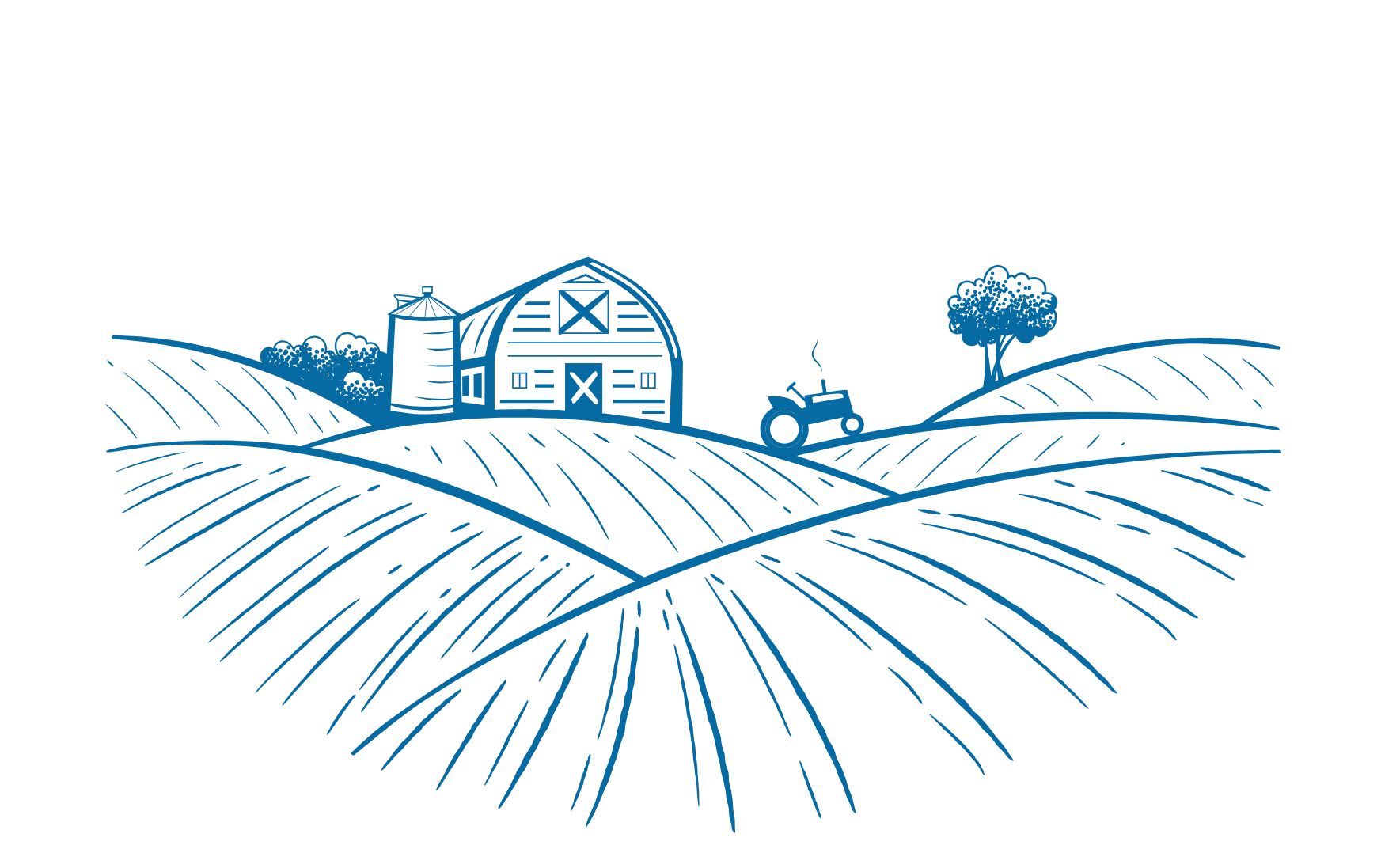
Other Land Application Challenges
The IQ Energy Solution
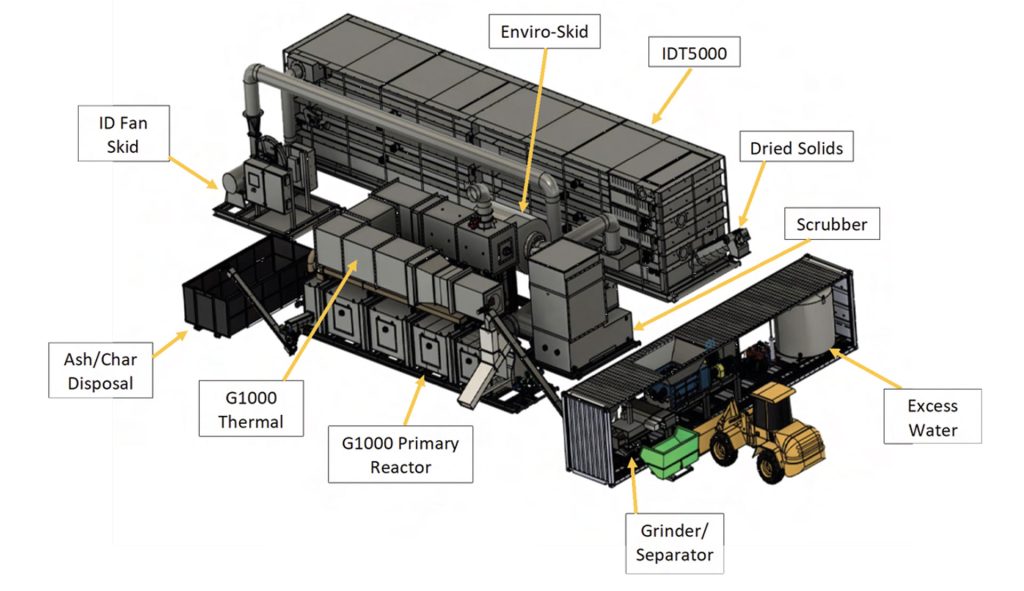
IQ Energy Australia is having a number of conversations discussing various organic waste streams. One of the main feedstocks of discussion is biosolids (sewage sludge). Generally, a feedstock, like biosolids, has a higher moisture content and will need either a dryer-only solution or a dryer and gasification solution. When it is an indirect dryer and gasification solution most of the energy value of the dewatered sludge will be needed to produce heat to do the drying which creates an effective renewable drying loop with a valuable biochar or char/ash produced.
IQ Energy Australia can provide a cost-effective, scalable and readily available solution. IQ Energy Units can work either as a centralised plant design or through a decentralised model and are movable to ensure they do not become stranded assets for a business. The compact design of the units allows them to fit neatly into a current plant.
At the heart of the IQ Energy solution is sophisticated software programming to ensure continuous operating units that can be monitored and operated remotely. This programming has been developed alongside the decades of organic feedstock handling within thermal treatment equipment.
Further Advantage: Built-in Extended Retention Chamber to Target PFAS
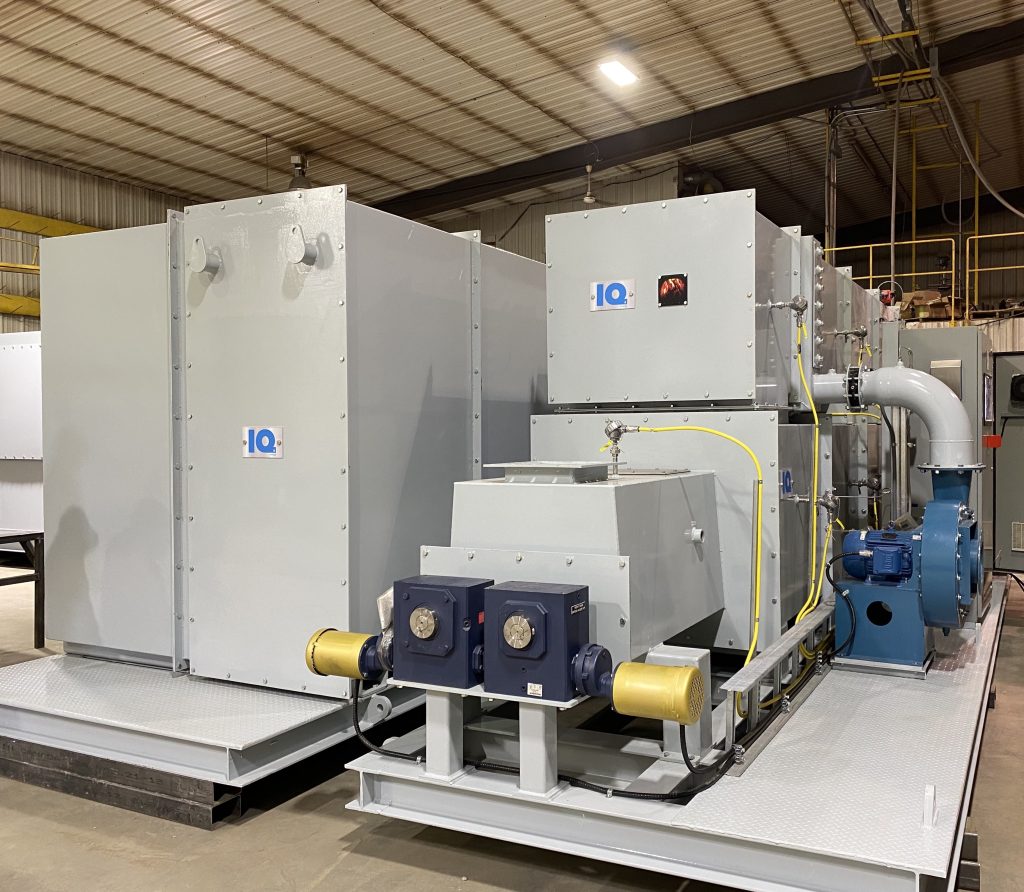
When emerging contaminants, like PFAS, are present within a feedstock, then an extended retention chamber can be integrated into the gasification unit to achieve 980 degrees Celsius for a duration of 2 seconds in the gas phase. This ensures PFAS has been eliminated from the char product, but also eliminated within the gas phase. Sophisticated environmental emissions controls are also built into the unit to ensure any other contaminants can be eliminated. The commercial gasification unit moving onto a site in Alberta has this extended retention chamber built in.
- Beneficial Resources
- Upgrades and Integrates with Current Systems
- Social, Economic and Environmental Benefits
Autothermal Continuous Solution
Circular: Dried Product to the Gasifier & Heat Back to the Drier
Input
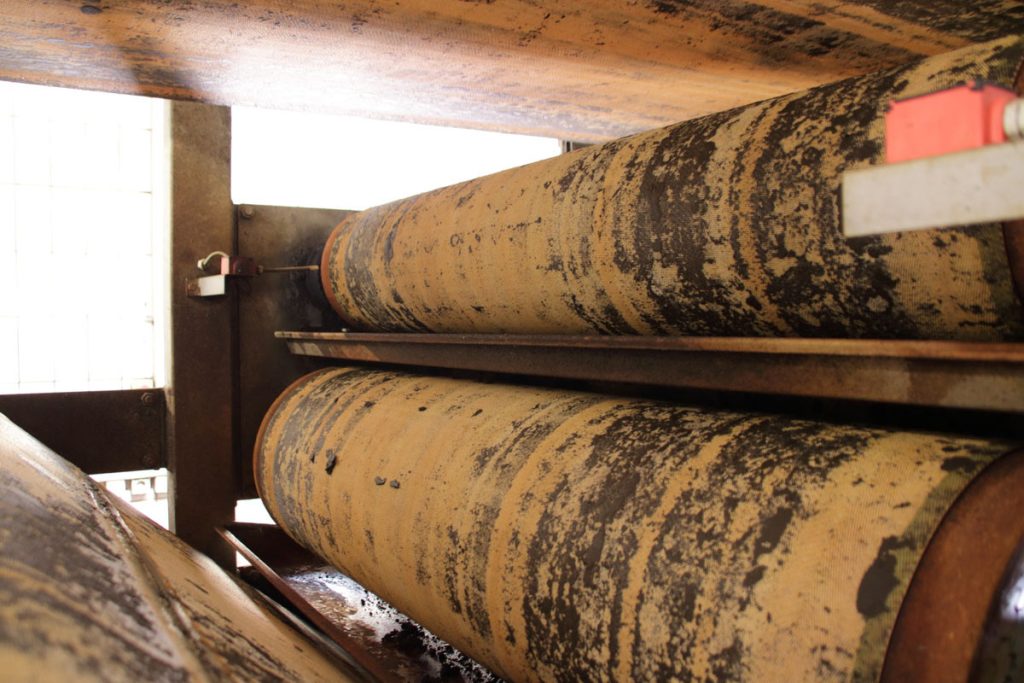
Dewatered Sludge (80-85% Moisture Content)
Input Examples:
- Biosolids
- Pulp Mill Sludge
- Agricultural Wastes
- Animal Manures
- Abattoir Waste
- Contaminated Organics etc.
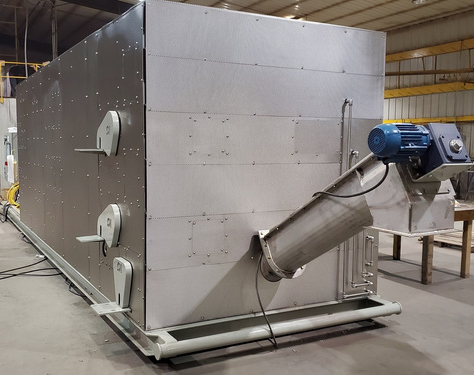
Heat
Dry Product
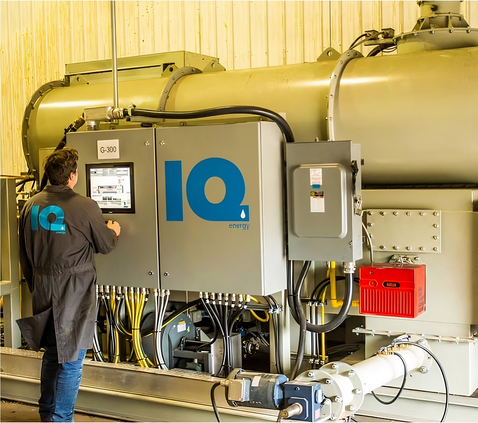
Output
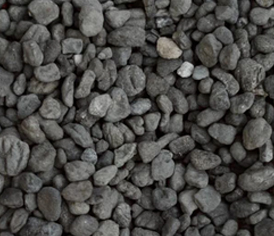
Biochar or Char/Ash

Hot Water/Steam
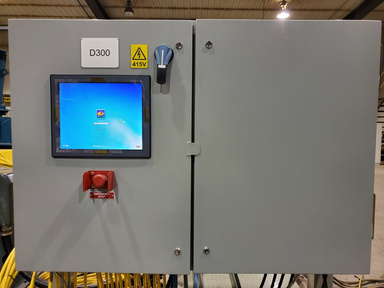
Additional Heat
Additional Benefit Examples: Tonnage Reduction, Easier to Handle, Offset High Disposal/Trucking Costs, Offset Emissions and other additional benefits we can discuss.
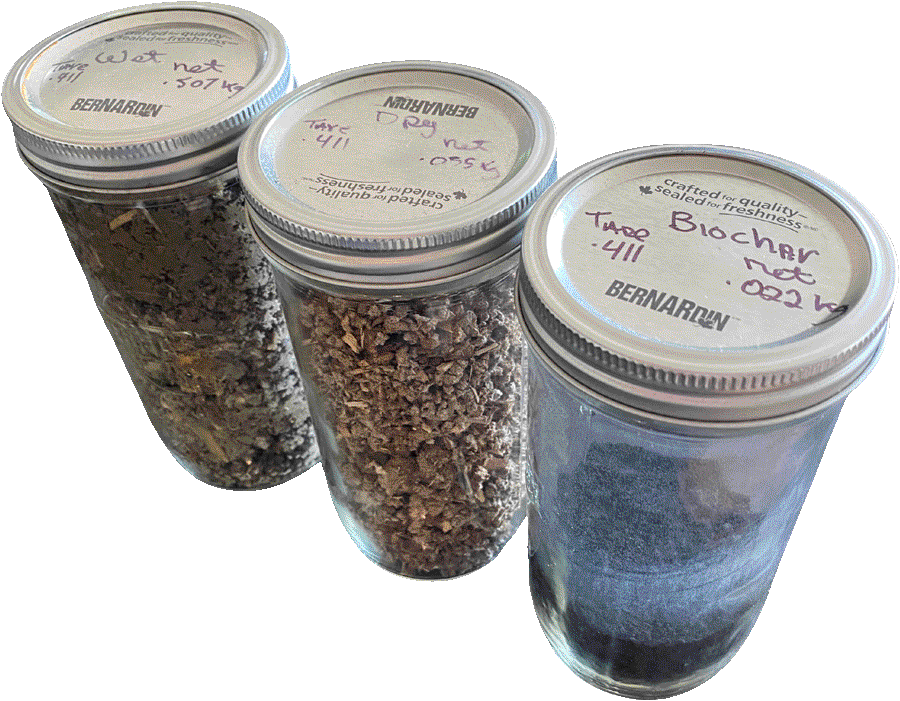
Uses & Benefits of Biochar or a Char/Ash
Increasingly biochar has been gaining attention for its environmental and agricultural benefits. Whether biochar or char/ash is produced within an IQ Energy system is dependent on how much carbon needs to be reacted through the thermal treatment process. Both a biochar or a char/ash will have value within an agricultural or industrial outcome. Some key advantages of these products are:
- Soil Improvement
- Nutrient Qualities and Agricultural Yield Improvement
- Carbon Sequestration
- Cost Reduction/Revenue Opportunity
- Potential Carbon Credits
- Cementitious Qualities for Industry and Infrastructure
With this IQ Energy will be conducting plot trials to understand further benefits of the biochar produced from the IQ Energy unit that will be operating in Alberta.
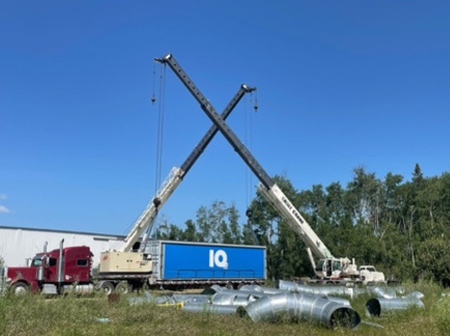
Benefits of the IQ Energy Approach:
Biosolids & Other Organics
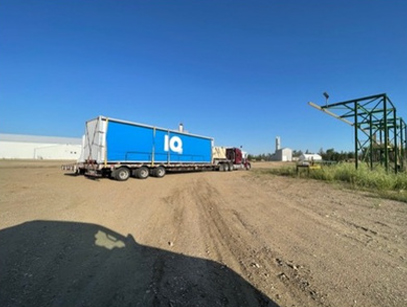

Risk Management
- Modular units to help scale to the solution on a pre-existing site and address front of mind social licence concerns, like land availability, odour, and processing time.
- Repeatable manufactured units with repetable safe, trusted and clean outcomes helping to build trust by regulators and the community.
- Manufactured and delivered onsite within 10-12 months to quickly address current challenges at a locked in price.

Financial Management
- Fixed Costs Savings: Reducing the tonnages of feedstock to offset rising
trucking/disposal costs and offsetting potential onsite energy needs, through heat, gas or power generation. - New Revenue Opportunities: Value to be placed on creating a dried product or a biochar or char/ash for agriculture or industry, from recovering water, and for potential carbon credits.

Pressing Concerns Management
- Emerging Contaminants: Built into the IQ Energy Gasification Unit is an extended retention chamber, to achieve higher temperature and residence times which can help you address issues, such as PFAS and microplastics.
- Emission Pressures: IQ Energy Units can have a signficant posive impact on greenhouse gases by:
- Displacing fossil fuel usage for drying or offsetting onsite energy needs.
- Reducing trucking and stockpiling needs.
- Intercepting emissions, such as methane and nitrous oxide, to help with scope 1 and 2 emissions and stopping emissions produced by landfills.
- Sequestering carbon as a char.
The Small IQ Gasifier-Dryer Model

G-300 Thermal Gasification Module
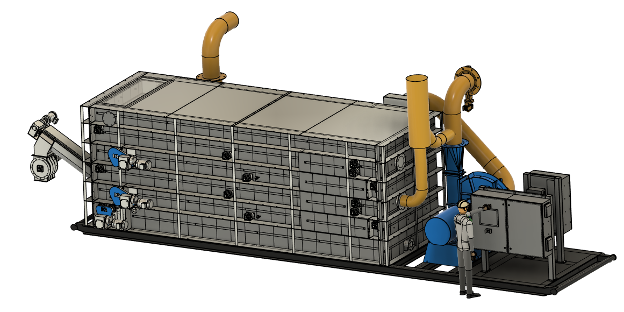
IDT-1000 Indirect Dryer
The Large IQ Gasifier Dryer Model

G-1000 Thermal Gasification Module
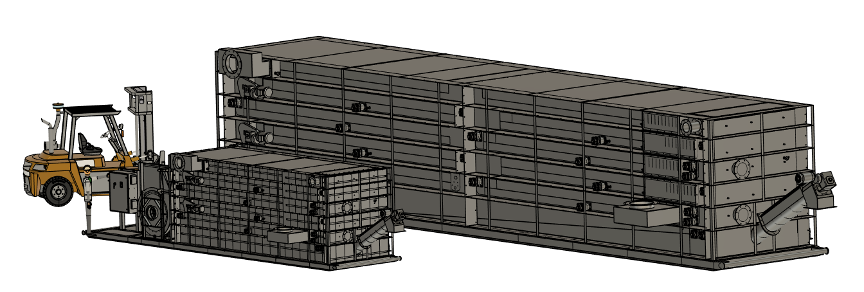
IDT-5000 Indirect Dryer
Above are some examples of various project sizes using our units. However we can also match our gasification unit with other dryer units currently on the market that you may prefer to use and we have additional sizes that are not listed here.
Scaling IQ Energy Units Up for Larger Projects
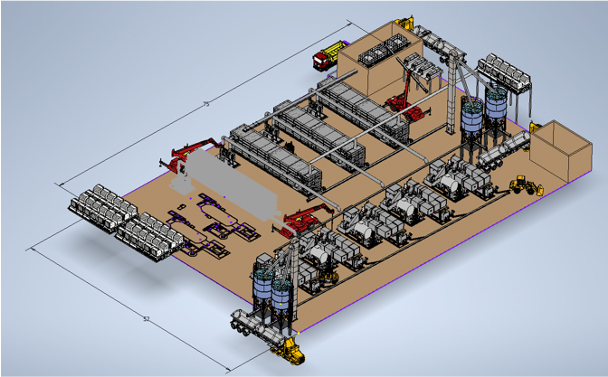
Above is 5 gasification units with 3 dryers which are simply fitted together for continuous processing and redundancy options. This configuration can process ~90,000 tonnes of dewatered biosolids per annum.
A modular unit approach can be of interest to a number of project operators for various reasons. It provides the opportunity to scale up over time, to scale quickly to meet urgent challenges, to trial an opportunity without over committing to a full project build and various other reasons. As biomass waste streams can grow overtime with factors, such as population increase, this means strategic planning is difficult as traditional plant build designs provide challenges with over capacity, long build times, significant engineering costs and high capital and operational costs. A modular approach allows you to bring in further units as needed and scale to your waste source as it grows and/or provide redundancy options.
